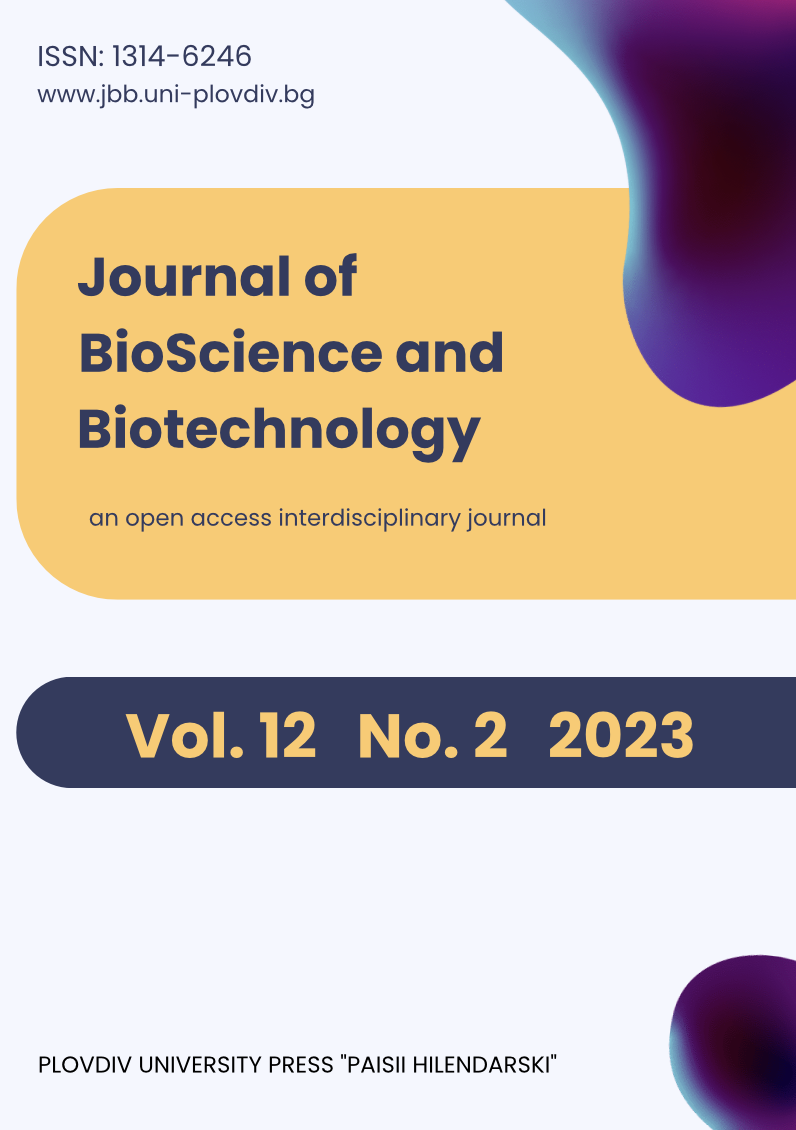Maize biofortification using SSR markers for Zn, Fe and provitamin A
Keywords:
Biofortification, Micronutrients, Maize, Fe, Zn, SSR, β-caroteneAbstract
Maize, India's third most significant crop, employs directly more than 12 million growers and accounts for 2% of the country's overall agricultural crop production value. Scientists are continuously working to counter the hidden hunger i.e. the micronutrient malnutrition. Therefore, marker assisted breeding approach has been deployed to increase the micronutrients Zn, Fe and pro-vitamin A content in the maize lines HPK-2 and CM-40 at HAREC, Kullu Himachal Pradesh, India. DNA isolation was carried out with leaf samples of 172 inbred and two parental lines (HPK-2 and CM-40). HPK-2 and CM-40 were utilized to screen 227 SSR primers of maize on PAGE/agarose gel for polymorphism. The mapping population was genotyped using 160 polymorphic SSR primers, phenotyped for Zn, Fe levels in the grain kernel through Atomic Absorption Spectrophotometer. Kernel Fe and Zn content were 35–60 ppm and 5–20 ppm, respectively. One QTL for Fe was found on chromosome I, while three QTLs for Zn were found on chromosomes I and IX. Further, IARI, New Delhi and CSKHP Agricultural University, Palampur have collaborated on two provitamin A donors for β-carotene enhancement in maize. Crossing scheme was created by combining lines with higher Zn and Fe content (BAJIM 6-01, BAJIM 6-15, BAJIM 6-08, BAJIM 6-10, BAJIM 6-06) with lines with higher β-carotene content (CIMMYT-13, CIMMYT-4). Plants containing the crtRB1 allele were selected in the foreground selection using primers HYD65F, HYD66R, and HYD62R up to BC2F4 and F6 generation. The highest β-carotene content was found in crosses between Bajim-06-10*CIMMYT-13 and BC2F4 generation, with 12.54ppm.
Downloads
Published
How to Cite
Issue
Section
License
Copyright (c) 2023 Rakesh Kumar Chahota, Satish Kumar Guleria, Pawan Kumar Sharma

This work is licensed under a Creative Commons Attribution-NonCommercial-NoDerivatives 3.0 Unported License.
Authors of articles published in Journal of BioScience and Biotechnology retain the copyright of their articles. The journal/publisher is not responsible for subsequent uses of the work. It is the author's responsibility to bring an infringement action if so desired by the author.
- copyright, and other proprietary rights relating to the article, such as patent rights;
- the right to use the substance of the article in future own works, including lectures and books;
- the right to reproduce the article for own purposes, provided the copies are not offered for sale;
- the right to self-archive the article.


